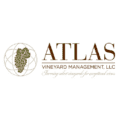Mendocino County wines owe their character to the land. The region’s soils—ranging from rocky sandstone to volcanic ash—shape grapes and define flavors. These soils challenge vines to produce fruit as distinctive as the terrain itself.
Gravelly Loam: Bright, Focused Wines
Gravelly loam, found in Anderson Valley, is well-draining and low in nutrients. Vines must work hard here, yielding small, concentrated berries. Pinot Noir, Chardonnay, and sparkling wine grapes thrive, producing wines with sharp acidity and vibrant fruit.
Sandstone: The Edge of Mendocino Ridge
On the high ridges of the Mendocino Ridge AVA, shallow sandstone soils force vines to dig deep. The wines—often Syrah and Zinfandel—are bold and dense, with a mineral streak reflecting the rugged hillsides.
Volcanic Soils: Heat and Depth
In Ukiah and Potter valleys, volcanic soils retain heat, ideal for late-ripening grapes like Cabernet Sauvignon and Syrah. These wines are structured and earthy, with layers of dark fruit and spice.
Alluvial Soils: Fruit-Driven and Accessible
Alluvial soils, formed by rivers, are found on valley floors like those in Redwood Valley. Rich in nutrients, these soils promote vigorous vine growth. Sauvignon Blanc and Zinfandel grown here are fruit-forward and approachable, with a freshness that invites a second glass.
Marine Sedimentary Soils: Coastal Elegance
Marine sedimentary soils, remnants of ancient seabeds, are found in Anderson Valley and Mendocino Ridge. Pinot Noir, Gewürztraminer, and Riesling thrive in these soils, producing crisp, mineral-driven wines that reflect the coastal influence.
Clay Loam: Slow and Steady
Clay loam, common in cooler zones, retains water and warms slowly, extending the growing season. This allows grapes like Pinot Noir and Chardonnay to develop depth and balance.
Elevation’s Impact: High-Altitude Wines
Vineyards in the Mendocino Ridge AVA sit above 1,200 feet, above the fog line. Thin soils of sandstone and schist challenge vines to produce concentrated grapes. Zinfandel and Rhône varietals grown here are layered and intense.
The Land Shapes the Wine
Every bottle of Mendocino wine is a reflection of its soil. Gravel, clay, sandstone, or volcanic ash—each adds a signature to the grapes and the wine they become. Mendocino County wines don’t just come from the land; they are the land.
















































